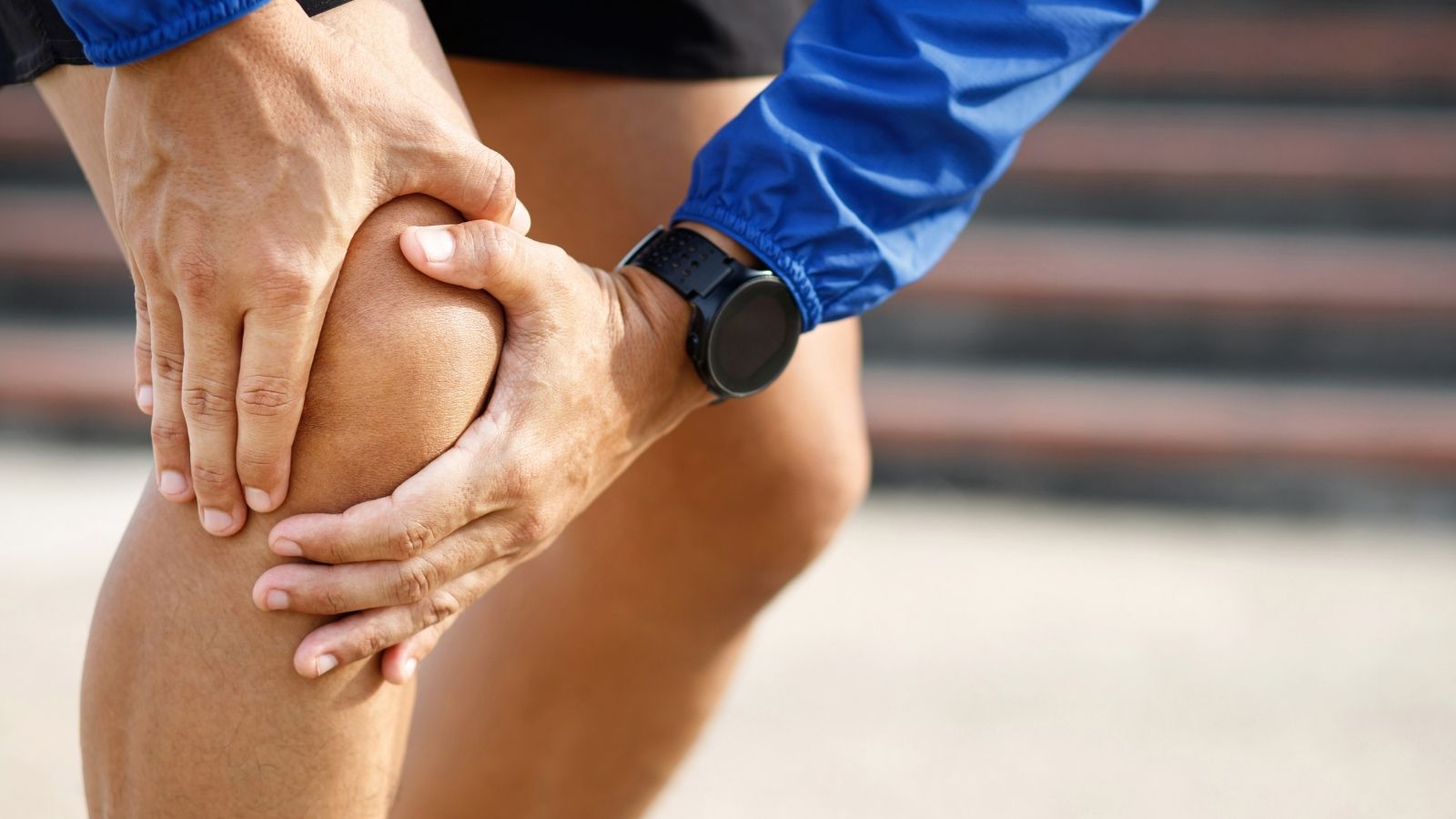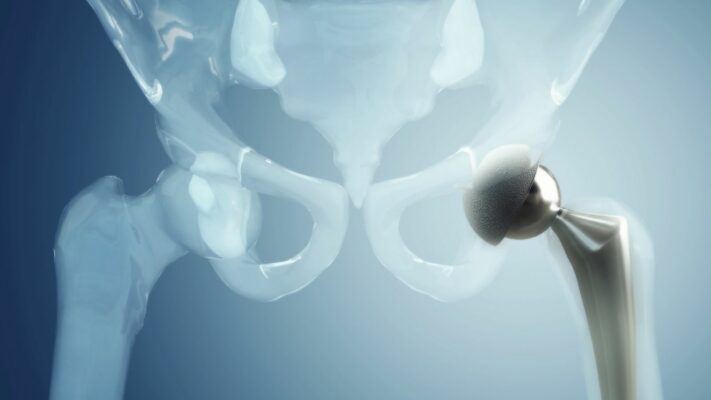Prof. Dr. Murat Demirel, one of the best orthopedic doctors treating anterior cruciate ligament (ACL) tears in Ankara, stands out with his long-standing experience in diagnosing and treating this injury, which disrupts the stability of the knee joint and is commonly seen in athletes and individuals with an active lifestyle. Anterior cruciate ligament (ACL) tears generally occur due to sudden twisting movements, trauma, or sports injuries and, if not treated properly in time, can lead to permanent joint damage. Prof. Dr. Demirel applies personalized surgical plans for his patients in Ankara, in hospitals equipped with advanced medical technology and high hygiene standards.
During the treatment process, depending on the degree of the tear and the patient’s lifestyle, non-surgical methods or arthroscopic ligament reconstruction may be applied. With doctor’s recommendations after an ACL tear, the healing process becomes faster, safer, and the return to sports is shortened. In addition, by providing transparent and up-to-date information about ACL treatment prices in Ankara, he helps patients make informed decisions. You can also protect your knee health, regain stability, and return to your active life by contacting immediately to book an appointment.
| Disease Name | Anterior Cruciate Ligament (ACL) Tear |
| Affected Area | Knee joint (anterior cruciate ligament between femur and tibia) |
| Symptoms | Sudden knee pain, swelling, giving way sensation, knee instability, limited range of motion |
| Diagnostic Methods | Physical examination (Lachman, pivot-shift test), MRI |
| Causes | Sudden changes in direction, sudden stop, poor landing after a jump, direct trauma |
| Risk Factors | Non-contact sports (football, basketball, skiing), female gender, muscle imbalances |
| Treatment Methods | Conservative (especially in inactive individuals), surgical (ACL reconstruction), physical therapy |
| Surgical Options | Arthroscopic anterior cruciate ligament reconstruction (with autograft or allograft) |
| Complications | Knee stiffness, graft failure, infection, cartilage damage |
| Recovery Process | 6–12 months post-surgery; rehabilitation is mandatory before returning to sports |
| Prevention Methods | Muscle strengthening, balance exercises, proper sports techniques |
| Follow-up Process | Regular check-ups during rehabilitation, monitoring with functional tests |


Prof. Dr. Murat Demirel
Orthopedics and Traumatology Specialist
Orthopedics Specialist Prof. Dr. Murat Demirel was born in Ankara in 1974. He completed his primary education at Ankara Kavaklıdere Primary School and his secondary and high school education at Ankara Atatürk Anatolian High School. Dr. Demirel graduated from Ankara University Faculty of Medicine in 1998 and completed his residency in Orthopedics and Traumatology at Ankara Numune Training and Research Hospital, 1st Orthopedics and Traumatology Clinic, in 2004.
PhD
Ankara University Institute of Health Sciences
Specialization
Ankara Numune Training and Research Hospital, 1st Orthopedics Clinic
Medical School
Ankara University Faculty of Medicine
Yazı İçeriği
What is an Anterior Cruciate Ligament Tear?
You can think of the anterior cruciate ligament as a very special structure located right in the middle of our knee, acting almost like a security guard. This strong ligament, which connects our thigh bone (femur) to our shin bone (tibia), forms an “X” shape inside the knee together with the posterior cruciate ligament. Thanks to this strategic position, it has two vital functions. First, it prevents the tibia from sliding uncontrollably forward over the femur, especially while running or stopping. Second, it prevents the knee from rotating dangerously on its axis during sudden turns. In short, the anterior cruciate ligament is the main actor in the feeling of stability and security in our knee.
Our knee is a miraculous engineering marvel that provides our mobility. There are four main ligaments that keep this structure balanced and safe. The anterior cruciate ligament (ACL) is one of the most important of these four guardians. When it is torn, this balance is disrupted. This is not just a simple “ligament tear.” If left untreated, like a domino effect, it puts other structures in the knee at risk. Because the meniscus and cartilage tissue, which try to compensate for the stability that the ACL cannot provide, are exposed to abnormal loads over time, they wear out and get damaged. In fact, statistically, in about half of ACL tear cases, additional injuries are also seen in the meniscus, cartilage, or other ligaments. For this reason, it is important to take this injury seriously and take the right steps; this is the greatest investment you can make for the future health of your knee.
Under what circumstances does an Anterior Cruciate Ligament Tear occur?
An ACL tear usually occurs when the ligament is subjected to far more tension than it can handle. Contrary to what most people think, it does not necessarily require being hit or colliding with something. In fact, the majority of injuries occur during completely “non-contact” mechanisms, meaning during the person’s own movement. This happens when the knee is suddenly and unexpectedly exposed to a load.
The most common injury scenarios are as follows:
- Stopping suddenly or decelerating while running.
- Trying to change direction suddenly while running at high speed.
- Landing in an unstable and uncontrolled way after a jump, such as a spike in volleyball or a layup in basketball.
- The foot remains fixed on the ground while the body suddenly rotates over the knee (pivot movement).
These movements increase the risk, especially because they are frequently repeated in certain sports:
- Football
- Basketball
- Volleyball
- Handball
- American football
- Skiing
Of course, direct blows to the knee, such as in a tackle in football or a car accident, can also cause a tear. However, the risk is not only for athletes. A wrong step or a fall in daily life can also cause this injury. Knowing that this injury is not just a matter of bad luck but results from the combination of specific risk factors is important in understanding prevention strategies.
What are the risk factors for an Anterior Cruciate Ligament Tear?
Some people may be more prone to an ACL tear due to their anatomical structures, muscle balances, or lifestyles. Knowing these risk factors is important in taking personal precautions.
The most well-known risk factors can be listed as follows:
Gender: This is one of the most striking factors. Numerous scientific studies have shown that female athletes are 4 to 8 times more likely to suffer an ACL injury compared to male athletes practicing the same sports. The underlying reasons include the effects of hormonal cycles on ligaments, anatomical differences in the hip-knee-ankle alignment in women, and differences in neuromuscular control mechanisms.
Muscle Imbalances: Especially when the quadriceps muscle at the front of the thigh is excessively stronger or weaker compared to the hamstring muscles at the back, the knee’s stability is disrupted. The hamstrings are the most important protective muscle group supporting the ACL, and their weakness is a serious risk factor.
Previous Injuries: Having previously suffered an ACL injury in the same or opposite knee increases the risk of re-injury.
Sports and Surface: In addition to engaging in high-risk sports, the type of surface is also important. For example, studies suggest that artificial turf, which causes the foot to stick more tightly to the ground, may slightly increase the risk compared to natural grass.
Equipment: Using inappropriate, worn-out, or incorrect shoes for the sport being practiced is another factor that increases the risk.
Poor Body Mechanics: Especially when the knees turn inward while landing after a jump (a condition we call “valgus collapse”), it dangerously increases the load on the ACL.
Contact us for detailed information and an appointment!
What symptoms occur when a person has an Anterior Cruciate Ligament Tear?
A person with an ACL tear usually experiences some very typical and disturbing situations at the time of injury and afterward. If you have suffered a knee injury, checking whether you have the following symptoms may give you an idea about the severity of the condition.
The most common symptoms of an anterior cruciate ligament tear are as follows:
Sudden “Pop” Sound: Most patients report hearing a clear “pop” sound coming from inside their knee during the injury, as if something has torn or broken.
Giving Way Sensation: This is the most characteristic symptom. The person feels as if their knee suddenly “gave way,” “slipped out from under them,” or “came out of place.” This is the result of the ligament suddenly losing its role in providing knee stability.
Severe Pain: A sharp pain starts at the moment of injury, making it impossible to continue the activity.
Rapid Swelling: Within the first few hours after the injury, the knee swells visibly due to bleeding (hemarthrosis). The knee almost becomes like a balloon.
Loss of Motion: Due to the severe swelling and pain in the knee, it becomes very difficult, even impossible, to fully bend or straighten the knee.
Inability to Bear Weight: It is not possible to step securely and bear weight on the injured leg. While trying to walk, there is extreme insecurity and a sense of looseness in the knee.
Bruising: One or two days after the injury, bruising may appear around the knee and even on the lower parts of the leg.
These symptoms, especially the combination of a “pop” sound and “giving way sensation,” strongly raise suspicion of an ACL tear and require immediate consultation with a specialist.
How do doctors confirm the diagnosis of an Anterior Cruciate Ligament Tear?
When you come to us with a suspicion of an ACL tear, we follow a systematic path to make the diagnosis. This process begins with what you tell us, continues with our examination, and is confirmed with imaging methods.
Listening to You (Anamnesis): The most important step in the diagnostic process is carefully listening to you. We want to know in detail how the injury happened, what you were doing at the time, whether you heard a sound, whether your knee swelled, and most importantly, whether you felt that “giving way” sensation. What you describe provides us with the most valuable clues.
Physical Examination: This is the critical step where an experienced orthopedic specialist can diagnose the tear to a great extent. During the examination, we compare your injured knee with the healthy one. We evaluate the degree of swelling in the knee, tender spots, and range of motion. Then we perform specific tests to check whether the anterior cruciate ligament is functioning properly. During these tests, by gently maneuvering your knee, we check whether the tibia slides abnormally forward. The most commonly used tests are:
- Lachman Test
- Anterior Drawer Test
- Pivot Shift Test
Imaging Methods: We use imaging tests to confirm the findings of the physical examination and to plan the treatment.
X-ray: This is usually the first test requested. Although it does not show the ligaments, it is important to rule out a possible fracture or bone avulsion that may have occurred during the injury.
Magnetic Resonance Imaging (MRI): MRI is the gold standard method in the diagnosis of ACL tears. MRI not only clearly shows the presence and degree of the tear but also provides detailed information about other important structures inside the knee, such as the meniscus, cartilage tissue, posterior cruciate ligament, and collateral ligaments. This is especially valuable if surgical treatment is being planned, as it provides us with a roadmap.
For whom is non-surgical treatment of an Anterior Cruciate Ligament Tear suitable?
“My cruciate ligament is torn, does this mean I definitely need surgery?” is one of the most frequently asked questions by our patients. The answer is not always “yes.” Non-surgical treatment options for ACL tears can be very effective and logical for the right patient profile. This treatment does not aim to repair the torn ligament; instead, it aims to enable the knee to function despite this deficiency by strengthening the muscles and adapting the lifestyle.
The suitable candidate profile for non-surgical treatment generally includes:
Low Physical Activity Expectations: Individuals with a calmer daily life, working at a desk job, and not engaged in sports that require sudden turns or jumps.
Older Patients: Usually older patients with a lower level of activity who do not want to take the risks of surgery.
Those Without a Distinct Giving Way Sensation: In some rare cases, despite a complete tear, very strong muscle structures may prevent any sensation of “giving way” or “instability” in daily life.
Only Stage 1 (Mild Strain) Injury: Cases of grade 1 ACL injury where the integrity of the ligament is preserved.
The cornerstone of non-surgical treatment is a comprehensive physical therapy and rehabilitation program. The goal of this program is to strengthen the muscles around the knee, especially the hamstrings (back thigh) and quadriceps (front thigh) muscles, so that these muscles take over the role of the torn ligament. We call this “dynamic stabilization.” Functional knee braces may also be used when necessary. However, when an ACL tear is left untreated surgically and the person continues to live an active life, recurrent episodes of giving way increase the risk of meniscus and cartilage damage, leading to early osteoarthritis in the knee. Therefore, this decision should be made carefully with the doctor, considering the patient’s lifestyle, expectations, and the functional condition of the knee.
Under what circumstances does surgical treatment of an Anterior Cruciate Ligament Tear become inevitable?
Anterior cruciate ligament reconstruction, meaning the surgical reconstruction of the torn ligament, is a completely personalized decision. When making this decision, we focus not only on the MRI report but also on the patient’s life, goals, and complaints.
We strongly recommend surgical treatment in the following situations:
Young and Active Patients: Especially in young and active individuals who want to return to sports, surgery is the best option to restore knee stability and safely return to sports.
Knee Instability (Giving Way) Complaint: If the person experiences a sense of “giving way,” “slipping,” or “instability” in the knee not only during sports but also during simple daily activities such as climbing stairs or making a sudden turn, this is a strong indication for surgery. This feeling of insecurity carries the risk of new injuries at any moment.
Combined Injuries: If there is also a repairable meniscus tear, cartilage damage, or another ligament injury along with the ACL tear, surgical intervention is usually required to resolve all these problems in a single session.
High-Demand Occupations: For individuals in professions that require being physically active (soldiers, police officers, firefighters, sports trainers, etc.), full knee function is of vital importance, making surgical treatment a priority.
Failed Non-Surgical Treatment: In patients who continue to feel knee instability despite months of regular physical therapy, surgery becomes inevitable.
The decision for surgery is, in a sense, an investment in the future. The goal is not only to solve today’s problem but also to protect the long-term health of the knee and enable the person to safely return to the activities they love.
What graft options are used in an Anterior Cruciate Ligament Tear surgery?
In ACL surgery, we replace the torn ligament with a new tissue. This new tissue is called a “graft.” The choice of graft is one of the most important factors affecting the success of the surgery, and this decision is made jointly based on the patient’s age, activity level, expectations, and the surgeon’s experience.
Basically, we have two main graft sources.
Autografts (From the Patient’s Own Body): In this method, a piece of tendon from the patient’s own body is used to create the new ligament.
Patellar Tendon: This involves harvesting the middle portion of the tendon between the kneecap and the shinbone, along with a bone block at each end. It is very strong, and because it provides bone-to-bone healing, it fuses quickly to the tunnels. It is generally considered the gold standard for young and professional athletes. The disadvantage is that there may be a slightly higher risk of anterior knee pain after surgery.
Hamstring Tendons: Obtained by harvesting two thin tendons (semitendinosus and gracilis) from the inner back of the thigh. Cosmetically more advantageous and carries a lower risk of anterior knee pain. However, the healing of soft tissue to bone may take slightly longer.
Quadriceps Tendon: A thick and strong graft taken from the part of the quadriceps muscle attaching to the kneecap. Its popularity has been increasing in recent years.
Allografts (From a Cadaver): Tendons obtained from tissue banks, processed, and sterilized.
The greatest advantage is that there is no need to make an additional incision to harvest tissue from the patient’s body. This shortens the surgery time and eliminates potential pain and weakness at the graft harvest site.
The biggest disadvantage is that, especially in young and active patients, the risk of re-tearing is higher compared to autografts, and biological healing may be slower. They are generally preferred in revision (second-time) surgeries or in older, less active patients.
There is no universally “best” graft option. The right graft for you is the one most suitable for your individual condition and goals. Discussing this in detail with your doctor, including all the advantages and disadvantages, is one of the most important steps of the treatment process.
What is the recovery process like after an Anterior Cruciate Ligament Tear surgery?
ACL surgery is only the beginning of the treatment process. The real success depends not only on the surgery but also on the rehabilitation process that is carried out patiently and with determination afterward. This process is not bound to a strict calendar but progresses through stages as certain goals are achieved. Full return to sports usually takes 6 to 12 months, sometimes longer.
We can divide your recovery journey into the following phases:
Phase 1: Protection and Early Motion (First 0–4 Weeks)
- The primary goals of this phase are:
- Protecting the operated graft.
- Controlling pain and swelling.
- Achieving full knee extension (straightening the leg).
- Gradually starting to bear weight with crutches.
- Regaining quadriceps muscle control.
Phase 2: Restoration of Strength and Motion (4–12 Weeks)
- The goals at this stage are:
- Completely weaning off crutches and returning to normal walking.
- Regaining full knee flexion and extension.
- Starting to strengthen the muscles around the knee (quadriceps, hamstrings, hips).
- Improving balance and proprioception (sense of joint position).
Phase 3: Functional Strength and Transition to Running (3–6 Months)
- At this stage, we are at a more advanced level.
- Continue increasing muscle strength and endurance.
- Begin preparatory exercises for running and then start slow jogging.
- Initiate light jumping and agility exercises.
Phase 4: Return to Sports and Prevention (6–12+ Months)
- This is the final and longest phase.
- Begin performing sport-specific movements (sudden stops, changes of direction, pivots) in a controlled way.
- Maximize explosive power and agility.
- Continue preventive exercise programs to minimize the risk of re-injury.
The decision to return to sports should not be rushed. This decision is made only after a series of functional tests by your physiotherapist and doctor, considering your knee’s strength, stability, and your psychological readiness. Remember, this is a marathon, not a sprint. Patience is the key to this process.
Contact us for detailed information and an appointment!
Frequently Asked Questions
What is an ACL tear and how does it occur?
An ACL tear is the complete or partial rupture of the ligament inside the knee joint that provides stability from front to back, usually as a result of sudden twisting, changes of direction, jumping, or trauma. It is most commonly seen in athletes, especially during activities such as football, basketball, and skiing, which involve intensive use of the knee.
What are the symptoms of an ACL tear?
During the tear, a sudden popping sound may be heard in the knee, followed by severe pain and immediate swelling. A sense of giving way or instability in the knee, restricted movement, difficulty climbing stairs, and in some cases, inability to bear weight may also occur.
How is the diagnosis made?
The diagnosis is made through a doctor’s examination, moving the knee, and performing specific tests. A definitive diagnosis is usually made with MRI (magnetic resonance imaging). Sometimes, an X-ray is also requested to rule out bone fractures.
Can an ACL tear heal on its own?
In partial tears, with proper rest, physical therapy, and exercise programs, knee stability can be improved. However, in complete tears, it is very difficult for the ligament to heal on its own, and surgery is usually required.
Which patients need surgery?
Surgery is more commonly recommended for patients who are athletes, lead an active lifestyle, experience constant instability in the knee, or are young and physically active. In older or less active individuals, conservative treatment options may be more suitable.
How is the surgery performed and what is the recovery process like?
The surgery is performed arthroscopically (minimally invasive), using either the patient’s own tendons or cadaver tissue to create a new ligament. After surgery, patients usually get up on the same day or the following day. Full recovery and return to sports require 6–9 months of regular physical therapy and exercise.
Can the knee fully recover with non-surgical treatment?
With non-surgical treatment, especially in non-athletes and less active patients, knee function can be preserved. However, instability and the risk of re-injury may persist. The treatment decision is made based on the patient’s expectations and lifestyle.
Can an ACL tear recur?
The risk of recurrence is low after proper treatment and rehabilitation; however, if adequate strengthening and preparation before returning to sports are not achieved, it may recur. A second tear may also occur in cases of new trauma.
Can athletes return to sports after surgery?
Yes, with a disciplined and regular rehabilitation process, most athletes can return to sports after ACL surgery. However, it usually takes 6–9 months, and medical approval is required before resuming sports.
How can ACL tears be prevented?
Strengthening the muscles around the knee, using proper techniques during sports, avoiding sudden turns and jumps, paying attention to warm-up exercises, and using appropriate footwear are effective ways to prevent ACL injuries.




